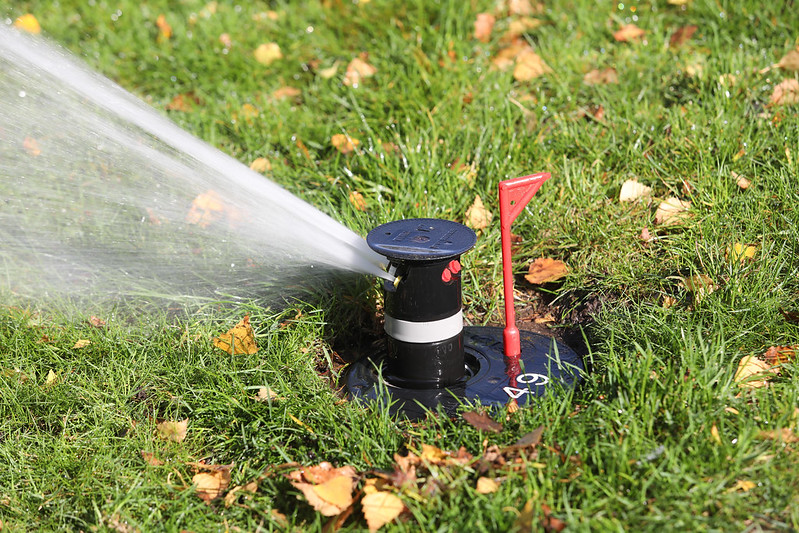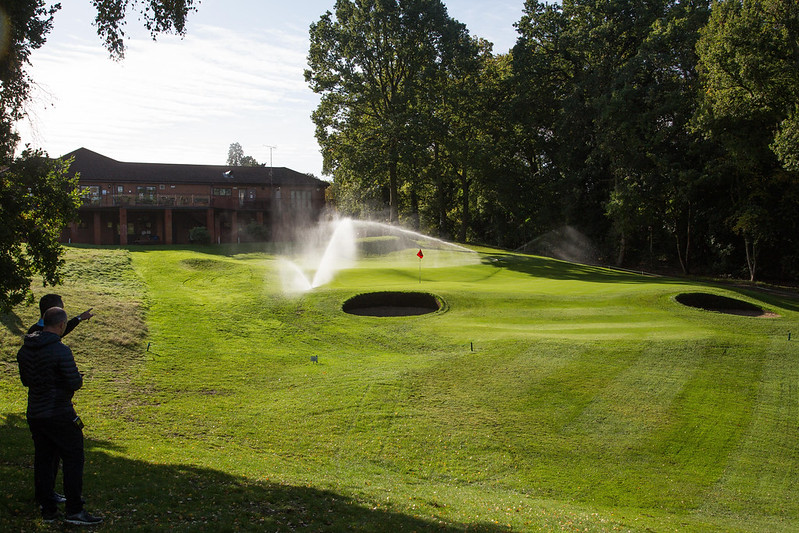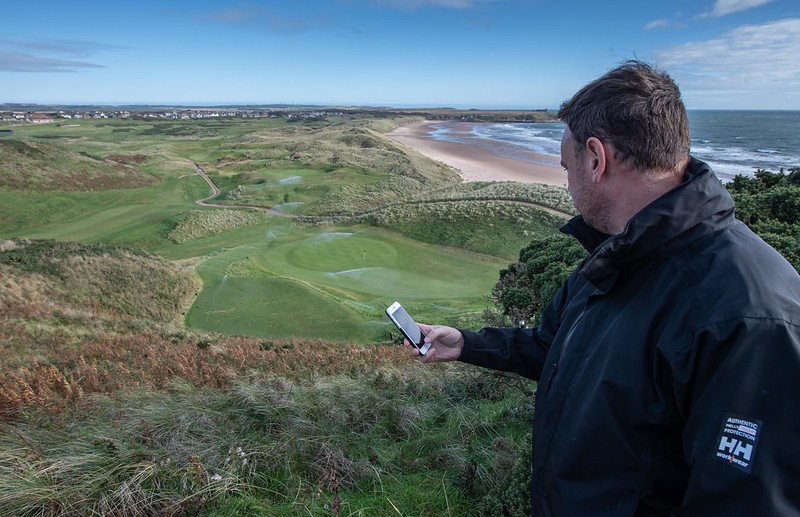Irrigation system management
How ten years of changes have affected water management protocols
Historically, we’ve seen growing pressure on turf professionals to deliver consistent playing surfaces through ever-extended seasons. Fortunately, though, irrigation water management is now recognised for the wider benefits a well-managed system can offer to both playability of turf as well as its overall health and longevity.
Although sustainable water management is a driving force behind many of these recent developments, proper irrigation will also work hand in glove with many other management techniques, from aeration and top dressing to applying foliar feeds and costly fungicides.

Why should you incorporate irrigation systems into a wider turf management regime?
The same, careful planning applies when it comes to easing the tasks associated with irrigation systems maintenance. The most carefully planned, installed, and managed irrigation system will ultimately be of little use if it’s costly to maintain and if repairs cause disruption and damage.
The key is to thoughtfully consider how your irrigation system fits into a wider, overall turf management regime. In doing so, installed systems can be maintained and updated to take advantage of newer and improved control and sprinkler systems technology.
What are the benefits of effective water management?
People often ask about the benefits of effective water management and for us, it’s all about control. Irrigation management can be used to ensure the turf’s impact upon playability is more easily controlled and provide consistent moisture to deliver an optimised playing surface.
As an example, irrigating early in the morning ahead of a day’s play helps ensure all greens start the day at similar moisture levels, which is especially important when you’re hosting a tournament.
But this isn’t to suggest the only thing that’s changed is how irrigation schemes interact with wider turf management protocols – far from it. What’s also changed is the development of how water irrigation systems can be controlled plus developments in details to include sprinkler system design.
Irrigation water management has evolved alongside new technologies
As with other management systems turf professionals have learned to master over the years, irrigation water management has evolved from a tool employed ‘to keep the grass green’ to a far more considered irrigation water management strategy.
Accurate sensors, for instance, can now alert those tasked with managing playing surfaces to falling moisture levels in the plant growth season – long before the turf starts to exhibit any sign of soil moisture stress. While modern control systems can automate irrigation systems and provide remote irrigation access with full record keeping potential.
It’s perhaps this intelligent technology element that’s at the heart of a well-planned, modern irrigation system. The ability to accurately tailor water application to precise conditions and requirements with smart systems can help ensure turf will respond as expected in relation to its localised environment.
No turf professional will need reminding that a sports pitch will have areas shaded by the surrounding stadium during different parts of the day, with resulting alterations in the turf’s irrigation needs. Equally, an exposed golf green, for example, will need a different management strategy compared to one that’s in a shaded, low-lying part of the course.
It has long been recognised that a blanket application of water is wasteful and tackling this in practice is now made easier with improved sensor technology, control software and advanced sprinkler system designs.

Accurately monitoring soil irrigation: what’s the best system?
Measuring changes in soil moisture, temperature, and other variables such as salinity is not a new idea. But what modern technology has done is made this monitoring easier to integrate and inform how the irrigation system is more widely controlled.
Take the wireless Toro Turf Guard soil monitoring system as an example; its self-contained sensor units can be positioned without the need for wiring. Each sensor sends signals to monitoring software, repeaters, and a powerful base station, allowing large areas to be covered.
Invaluable data recorded by wireless sensors enables more informed adjustments to irrigation schedules to be made.
Why is accurate soil monitoring important?
As well as its water-saving benefits, accurate monitoring can help alert users to the conditions that can lead to other problems, drainage issues, and turf stress.
Another plus point is, as the wireless sensors are not static, they can be moved around to easily optimise their positioning, taking into account changes in shading on a pitch, for instance, or moving to a different position on a green.
Although primarily developed to prevent over- and under-watering, information recorded by soil monitoring equipment provides valuable data over extended periods of time. Using this information can help make sure an irrigation system can be adapted to make the best use of applied water, with the potential to decrease consumption and help maintain sward health.
Getting control, anytime: how to operate irrigation systems remotely with a central control
Computer-based irrigation software, such as the Toro Lynx system, can also be employed to improve water management. These deliver not only sophisticated water irrigation system control, but also detailed information when the sprinkler system is in use.
With portable tech, the Toro Lynx sprinklers allow the irrigation systems to be ‘interrogated’ while other tasks are carried out. As an example, those irrigation systems programmed to set off the sprinklers late at night can be monitored remotely, with the software detailing which sprinklers are running and for how long.
The system can be set up to work with soil sensors, to include Turf Guard wireless units, for example, or to provide an alert when the sensor picks up a change in moisture that may need attention. This provides the information to support the decisions required to programme the irrigation control system.
The Toro Lynx central control system, for example, is advanced enough to provide full mapping of a golf course, but it’s also equally at home looking after a single stadium-sized football or rugby pitch.
It’s designed to fit user needs and be upgraded to take advantage of developing technology, moulding to your club’s requirements.

How to find the right irrigation system for your grounds
Sprinkler technology has also evolved significantly over the past 15 years, from water droplet size and spread patterns, ensuring the target area is evenly irrigated, to a choice of sprinkler to suit specific applications.
How sprinklers operate is, of course vital, but so too is how they fit into an irrigation system. No matter who makes them, sprinklers have a finite life; all are subject to potential damage.
Toro irrigation sprinkler systems have been developed to meet end user demands for efficiency, but we have to ensure any installation can be both maintained and repaired economically. Fortunately, though, the days of digging up a problem sprinkler, with the costs and disruption this can entail, have been addressed by the current range of Toro sprinklers.
Upgrade and optimise: the secret to irrigation system management success
Installing an irrigation system, or indeed updating an existing one, can be seen as complex, when it doesn’t have to be. But that’s not saying it’s just about running a few pipes to a set of sprinklers and ensuring there is enough pressure available to supply all those sprinklers with water.
A modern irrigation system can deliver not just the correct volume of irrigation water to specific areas of turf, but also provide detailed information that can be of great help in monitoring overall turf health.
The best irrigation systems optimise available irrigation water to reduce costs and will deliver reliable (and upgradeable) performance over their lifetime. As is so often the case, the most cost effective system is unlikely to be the one that costs the least to install.